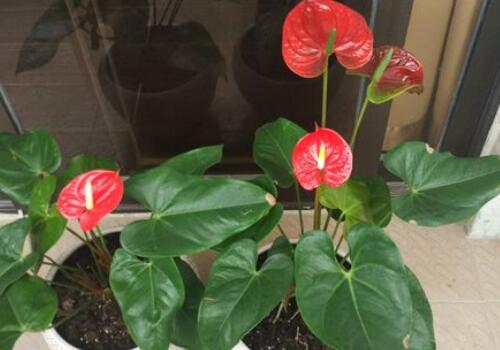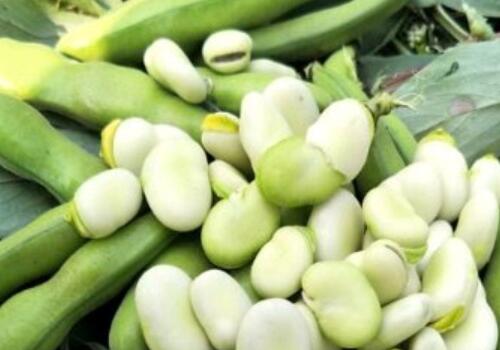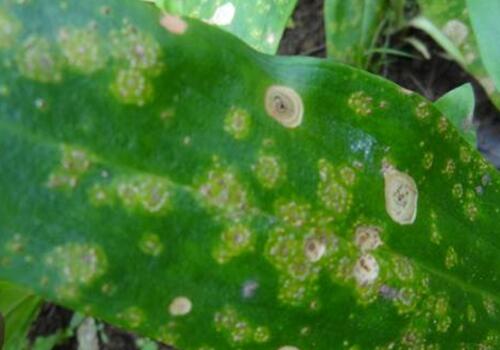Is perennial anthurium poisonous? Where should I put it at home? What are the key points of maintenance technology?
Anthurium generally refers to the flower candle, also known as red goose palm, fire crane flower, Anzu flower, Araceae perennial evergreen herbs, can blossom all the year round. Is the palm poisonous? Where should I put it at home? What are the key points of maintenance technology?

Is anthurium poisonous?
1. Anthurium is a plant of the genus Anthurium of Araceae. In fact, plants of Araceae are slightly toxic, and so is Anthurium andraeanum.
2. Anthurium andraeanum is not very toxic, its juice is toxic, mainly from flowers, roots and leaves. In general, when pruning Anthurium andraeanum or touching the juice of Anthurium andraeanum for other reasons, or accidentally eating Anthurium andraeanum, it will be poisoned. You can find some licorice, pain pills or flaxseed to relieve the poisoning symptoms.
Where should I put Anthurium andraeanum at home?
1. Anthurium andraeanum is colorful, prosperous, and has high ornamental value. It can be maintained indoors, beautify the home, purify the air, absorb harmful substances in the air, and regulate the indoor air. It is a popular flower in the home. Although some worry that breeding red palm will be poisoned, but as long as they are more careful in daily life, there is no need to worry about poisoning. After all, there are relatively few cases of poisoning.
2. it is better to put the bright place in the room, in the ventilated place, it is more resistant to drought, dry and timely watering, it is better to spray water frequently on the branches of leaves that like to be moist, and it is better to add some nutrient solution, which can promote the continuous flowering of plants.
What are the key points of Anthurium andraeanum maintenance technology?
1. Temperature: when raising Anthurium andraeanum in the family, the temperature should be guaranteed as much as possible. The optimum growth temperature of Anthurium andraeanum is 16 ℃ 24 ℃, and the lowest temperature should be above 12 min. When the summer temperature exceeds 30 ℃, the flowers should be moved to a ventilated room opposite to the north, and water can be sprayed around the plants to cool down.
2. Illumination: Anthurium andraeanum must have sufficient scattered light for normal growth. Attention should be paid to Anthurium andraeanum family culture: avoid strong light in summer to direct light on leaves and flowers; in autumn and winter, move to the vicinity of the window to increase illumination. It is also necessary to rotate the plant regularly to ensure that it receives uniform light and promote the perfection of its crown shape.
3. Humidity: the normal growth of Anthurium andraeanum needs about 70% air humidity, which is generally difficult to achieve in ordinary family farming. You can use a clean wet towel to wet the leaves several times a day, or spray water around the plant regularly to increase air humidity. (but do not sprinkle the flowers with water, so as not to affect the ornamental quality. )
4. Watering and fertilization: under normal growth conditions, dry wetlands can be seen to water the cultivated soil every week. Generally grasp the principle that the soil surface is not dry or irrigated, and the soil surface is thoroughly watered. The watering times and amount of water can be reduced appropriately in spring, autumn and winter. 78% of the special nutrient solution or 500 times diluted fertilizer should be applied with watering every half month.
5. Pruning: in general, during the growth of Anthurium andraeanum, the basal petiole degenerates gradually, and the stipules can be cut off in time when the stipules become dry. When the pedicel turns yellow after anthesis, it should also be cut off from the protective post of 2 cm at the base as soon as possible.
Time: 2019-04-08 Click:
- Prev

When is the annual herb broad bean usually planted? What are the methods? What is the reason for falling flowers and pods?
Broad beans, also known as South beans, Hu beans, Vertical beans, Buddha beans, annual herbs, 30-100 (120) cm high. For grain, vegetables and feed, green manure dual-use crops. When will the broad beans be planted? What are the methods? What is the reason for falling flowers and pods? When will broad beans be planted?
- Next

Herbaceous plant Gentiana leaf rust, root rot, aphids and other major diseases and insect pests and control measures?
Gentiana macrophylla, alias Gentiana macrophylla, perennial herb, is one of the main drugs for the treatment of rheumatic arthralgia, tuberculosis, hot flashes, jaundice and so on. That herbaceous plant Gentiana leaf rust, root rot, aphids and other major diseases and insect pests and control measures? Let's learn more about it.
Related
- Fuxing push coffee new agricultural production and marketing class: lack of small-scale processing plants
- Jujube rice field leisure farm deep ploughing Yilan for five years to create a space for organic food and play
- Nongyu Farm-A trial of organic papaya for brave women with advanced technology
- Four points for attention in the prevention and control of diseases and insect pests of edible fungi
- How to add nutrient solution to Edible Fungi
- Is there any good way to control edible fungus mites?
- Open Inoculation Technology of Edible Fungi
- Is there any clever way to use fertilizer for edible fungus in winter?
- What agents are used to kill the pathogens of edible fungi in the mushroom shed?
- Rapid drying of Edible Fungi

